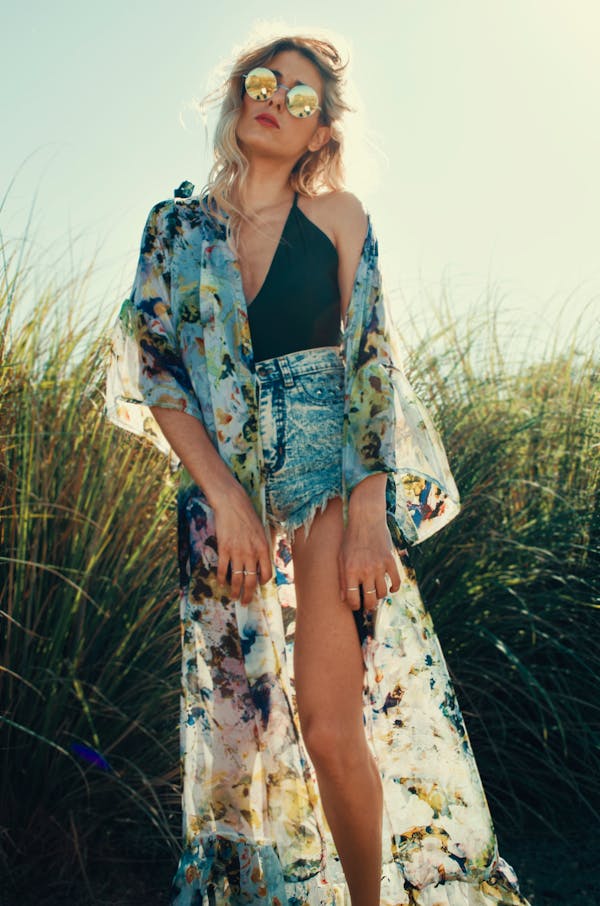Dior is one of the most renowned and influential luxury fashion houses in the world. Known for its timeless elegance, exquisite craftsmanship, and innovative designs, Dior has shaped the world of fashion since its inception in 1946. Founded by Christian Dior in Paris, the brand quickly became a symbol of sophistication and femininity, with its creations still resonating with fashion lovers today.
The Birth of Dior
Christian Dior, a talented designer with a background in art, opened his first fashion house in 1946. His goal was to bring a fresh, new vision to the world of fashion, which had been severely impacted by World War II. The post-war era saw a fashion industry still recovering from austerity, where clothing was often practical and restrained. Christian Dior sought to break free from these constraints and create a new, more luxurious, and feminine silhouette.
In 1947, Dior introduced his groundbreaking collection known as the “New Look.” The New Look was revolutionary in that it emphasized an exaggerated hourglass figure, with soft shoulders, a narrow waist, and a voluminous skirt. This dramatic departure from the wartime styles of austerity became an instant success and solidified Dior’s position as one of the most important designers of the 20th century. The New Look was embraced by women around the world, offering them a new sense of freedom and femininity after years of restrictions.
The Dior Legacy
Dior’s success with the New Look quickly established him as a leader in the fashion industry. His collections became a symbol of luxury, grace, and high society, and his designs were beloved by the elite, including Hollywood stars and royalty. Celebrities such as Grace Kelly, Elizabeth Taylor, and Marilyn Monroe often wore Dior designs, further elevating the brand’s status and appeal.
Christian Dior’s designs were characterized by their refined elegance, luxurious fabrics, and intricate details. His collections included both haute couture and ready-to-wear lines, making his creations accessible to women from all walks of life. Dior’s commitment to craftsmanship and his ability to create timeless, feminine designs quickly made his fashion house one of the most coveted in the world.
The Changing of the Guard: Yves Saint Laurent
After Christian Dior’s sudden death in 1957, the fashion house was left in the hands of a young Yves Saint Laurent, who had been working as Dior’s assistant. At just 21 years old, Saint Laurent became the creative director of Dior and continued to build on the legacy of his predecessor while introducing his own vision for the brand. Saint Laurent introduced several key pieces, such as the “trapeze dress” in 1958, which became an instant classic and marked a shift toward more modern, relaxed silhouettes.
Yves Saint Laurent’s tenure at Dior was short, but it left a lasting impact on the brand. He went on to create his own fashion house, and Dior’s reputation for innovation and high fashion continued under subsequent creative directors.
Dior Under John Galliano and Raf Simons
In 1996, British designer John Galliano was appointed as the creative director of Dior, bringing his flamboyant, theatrical style to the brand. Galliano’s work at Dior was highly acclaimed, as he reinterpreted Christian Dior’s vision with bold, extravagant, and often whimsical designs. His collections were known for their dramatic flair, intricate detailing, and dramatic runway shows that became spectacles in their own right.
Galliano’s tenure at Dior lasted until 2011, when he was replaced by Belgian designer Raf Simons. Simons brought a more minimalist, modern approach to the brand, focusing on clean lines, sharp tailoring, and understated elegance. His work at Dior was seen as a return to the brand’s classic roots while incorporating contemporary elements.
Dior Today
Since 2016, Dior has been led by designer Maria Grazia Chiuri, who made history as the first woman to become the creative director of Dior. Chiuri’s approach has been revolutionary, bringing feminist themes and a more inclusive vision to the brand. Her collections often include empowering messages, with feminist slogans such as “We Should All Be Feminists” and “Dior Loves Women” featured prominently on T-shirts and accessories. Chiuri has modernized Dior, blending the brand’s rich heritage with a contemporary sensibility that resonates with today’s fashion-conscious consumers.
Dior’s commitment to craftsmanship and quality remains unwavering, and the brand continues to produce iconic collections of haute couture, ready-to-wear, and accessories. The Dior Lady Dior bag, introduced in 1995, remains one of the brand’s most coveted and recognizable accessories, symbolizing timeless luxury and sophistication. Dior’s perfumes, such as Dior Sauvage and J’adore, are also immensely popular, further cementing the brand’s place in the world of luxury.
Dior’s Influence on Fashion and Culture
Dior has not only influenced the world of fashion but also had a significant impact on popular culture. The brand’s collections have been featured in films, music, and art, and its influence can be seen in the style choices of celebrities and influencers around the world. Dior’s commitment to timeless elegance and femininity has made it one of the most enduring fashion houses, with its designs continuing to shape trends and inspire generations.
Conclusion
Dior is more than just a luxury brand—it is a symbol of elegance, innovation, and timeless beauty. From Christian Dior’s revolutionary New Look to Maria Grazia Chiuri’s feminist-inspired collections, Dior has consistently pushed the boundaries of fashion while staying true to its roots. Today, Dior continues to lead the fashion world, offering unparalleled craftsmanship, high fashion, and iconic designs that resonate with women and men around the globe. With its rich history, commitment to excellence, and ability to adapt to the modern world, Dior remains one of the most influential and respected names in luxury fashion.



